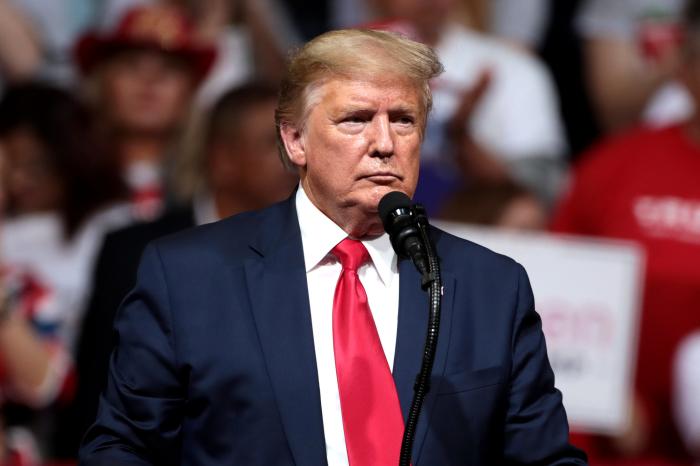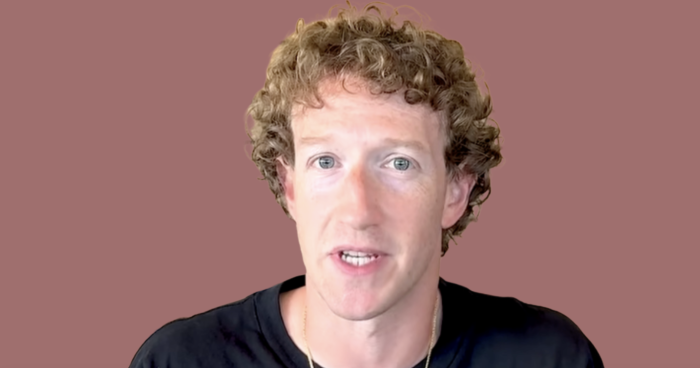A Lifeline During the Pandemic

This year’s National Lifeline Awareness Week — held in honor of the only federal program that helps subsidize low-income households’ access to phone and internet services — came to a close on Friday.
And the annual event couldn’t have been more timely: In the midst of the COVID-19 pandemic, millions of people are struggling to stay connected. It’s helpful to reflect on the Lifeline program’s history, its relevance today and how it helps people get and stay connected.
The Lifeline program directly supports low-income households’ access to affordable — and in many instances no-cost — telecommunications services. It’s but one critical tool available to the federal government to help close the digital divide, a chasm that disproportionately impacts Black, Brown and Indigenous peoples.
When the pandemic reached the United States and shelter-in-place mandates began in March, we immediately recognized how critical it would be for people to get and stay connected.
Free Press Action helped shape language in the HEROES Act, which passed the House in May and would provide billions in emergency funds for broadband connectivity, centering the needs of low-income families, people who have lost work and people who are incarcerated.
This legislation builds on work we’ve done for years to raise awareness of the barriers to broadband adoption and affordability — and to advocate for policies, laws and regulations to dismantle these roadblocks. The pandemic has exacerbated preexisting inequities — and as the country remains in a national health emergency, people are still not sufficiently connected, and decision-makers have not done everything they can to change that.
The pandemic has exposed the systemic inequities in our healthcare system, with Black, Brown and Indigenous communities especially susceptible to the ravages of COVID-19. For example, the COVID-19 mortality rate for Black people in the United States is more than twice that of the nation’s white, non-Hispanic people.
The causes are rooted in systemic racism, with age-old discrimination and redlining almost assuring inadequate healthcare facilities and disproportionate poverty-related co-morbidities in marginalized communities. The same discriminatory systems also frustrate these communities’ ability to get and stay connected during the pandemic. Among those systems are redlined network deployment, the use of credit checks, underfunded school systems that are unable to fully implement virtual learning, and social programs that impose paternalistic schemes to control — rather than empower — people who are low income.
The history of Lifeline
Started under the Reagan administration, Lifeline successfully connected most people who were eligible for the program to landline telephone service — which was essential at the time to stay connected with family members, find employment opportunities and reach emergency services.
As the technology evolved, so too did Lifeline — but in fits and starts, and in the face of mounting opposition to “handouts” and the paternalistic restrictions such thinking invites.
A significant evolution occurred under the George W. Bush administration in 2005, when the program was expanded to include cellphone service. This change was largely propelled as a response to Hurricane Katrina. With homes washed away and the people of the Gulf states scattered to shelters and other temporary housing, cellphones helped individuals stay connected to their families and communities — and with the aid they needed to rebuild.
When the FCC studied the lessons of Hurricane Katrina, experts discovered the country was not prepared for a disaster of this magnitude. The FCC recognized that it needed to be “better prepared for future disasters and emergencies, including an influenza pandemic.” Those words were written in 2007.
Then, in 2016, the program began its next evolution, when many advocates recognized that internet access had become as essential as landline phones, and the program sought to help make broadband more affordable.
Lifeline under threat today
Recent data reveal that only 7.7 million people take advantage of the Lifeline benefit. That’s just over 20 percent of the estimated eligible population.
But we can’t assume that the 79 percent of those eligible to receive the benefit don’t want or need it.
The steady decline in Lifeline enrollment has come in lockstep with the Trump FCC's continual assault on the program: Changes ostensibly made to uphold Lifeline’s “integrity” have also made it more difficult for people to stay in it. And these changes caused confusion and dampened awareness too. Almost every day we at Free Press speak with people, including telecom experts and policymakers, who don’t know what the program is, much less its ins and outs.
And the Trump FCC has gutted key provisions of the changes made by the Obama administration in 2016 to ensure that everyone can access the internet. A precipitous drop in participation is due to many factors, but rather than examine these changes to determine if everything is OK, the agency has accelerated this decline with further attacks.
One of the first salvos in this administration’s assault came just after Trump made Ajit Pai the chairman of the FCC, with the early 2017 revocation of the approval of several Lifeline Broadband Providers — companies that were lining up to provide home broadband access to low-income households.
The attacks escalated, including a proposal later in 2017 to kick out many Lifeline providers that resell service they buy wholesale from the giant national wireless carriers like AT&T and T-Mobile, since smaller carriers don’t have their own networks. This put at risk the service of over 70 percent of the Lifeline program’s subscribers.
Another proposal would have required “co-pays” for subsidized service that companies were willing to provide at no cost to their customers, just to prove that low-income people “value” the service by making them put “skin in the game.” Yet another proposal sought to kick people off the program after they used their “lifetime limit” of two years.
The list goes on, and the destabilization of the program continues to this day. Adding insult to injury, all these changes were proposed in the wake of Hurricanes Irma and Maria devastating the islands of Puerto Rico, where Lifeline participation is high and keeping people connected after those storms is a matter of life and death.
As the pandemic continues, the Trump FCC should cease its attacks on Lifeline once and for all, and use the program as a means to get and keep people connected.
What the FCC and Congress should do
First, the FCC should pause an automatic increase in the minimum-service standards required of Lifeline providers until the agency completes a review of the Lifeline marketplace (we just wrote in support of a petition to pause the standard). Free Press joins other advocates in recognizing the need for such regularly updated standards in the first place, which require minimums for minutes and the monthly amount of broadband data on offer, to ensure that people in the program receive a robust, quality service.
However, these automatic updates to the standards have gone haywire two years in a row, jumping so high that the Lifeline providers claimed their no-cost and affordable options were at risk. And while the Commission responded to this problem in 2019, it did so by allowing a partial increase without gathering the necessary data on what the costs to providers really are. The Lifeline program and providers appear to have weathered last year’s increase, but the FCC is poised for yet another one still without the necessary data.
This game of chicken is tenable until it’s not. The Commission needs to slow down and peer over the edge to make sure there’s no steep drop. If increasing the service obligations of carriers leads to an out-of-pocket cost for Lifeline subscribers, this could drive Lifeline beneficiaries and providers alike out of the program and make the service unaffordable.
Second, the FCC should extend the current pandemic-related Lifeline program waivers it has already issued until the public-health emergency abates. The Commission has waived a slate of regulations to ensure no one is involuntarily removed from the program during the pandemic. Those waivers have been extended five times, with the latest extension scheduled to end on Nov. 30, 2020. The pandemic will be with us at least until the end of the year and very likely longer.
People are anxious about their futures, between the pandemic and its economic impact, and extending these allowances for a longer period would give Lifeline subscribers one less thing to worry about. Extending the waivers on Lifeline through the eventual end of the health crisis will ensure that subscribers maintain vital access to essential services while the pandemic continues to have significant economic consequences for low-income households.
Congress must act too.
The expiration of essential COVID-19 relief measures — including additional unemployment benefits and moratoriums on utility shutoffs and evictions — is endangering people’s lives. More than 30 million people in the United States — which is about five times the peak number of unemployment claims during the Great Recession — were receiving unemployment benefits when their pandemic-related support expired due to gridlock in Congress.
Alongside the expiration of these benefits, the federal stay on evictions protecting roughly one-third of all U.S. renters has also ended. More than 43 million people — 43 times the number of people evicted in 2010 following the Great Recession — could be displaced, leaving them more vulnerable to COVID-19 ... which could lead to another huge spike in the health crisis.
And Congress can give the FCC a new tool: an emergency broadband benefit. Congress can provide funding for a more significant $50-per-month benefit available to those currently eligible for the Lifeline program, as well as others who are hurting financially but don’t qualify under the current Lifeline rules. Such a move would allow millions more to afford an internet connection at home and weather this pandemic with one less worry.
Both Lifeline Awareness Week and a House hearing explored the lost opportunities of the Trump FCC. But we can’t stop at lamenting all the ways in which the Lifeline program could have better met this moment.
The FCC should focus on ensuring that those eligible for Lifeline know about the program — and it should stop trying to destabilize the program into oblivion. Both the FCC and Congress can provide more aid right now, whether that’s via the emergency broadband-benefit bills in Congress or continued program waivers at the FCC.
And in every case, the FCC must make sure its efforts do not perpetuate the old systems and paternalistic impulses seemingly driving the agency’s actions over the last few years. We need no “skin in the game” policies because that skin is too often disproportionately Black and Brown.
The Lifeline program must empower the Lifeline subscriber. We need to pare back the barriers to the program, rather than create new ones. And we must, at a bare minimum, make certain that everyone who might need the support knows it exists.





